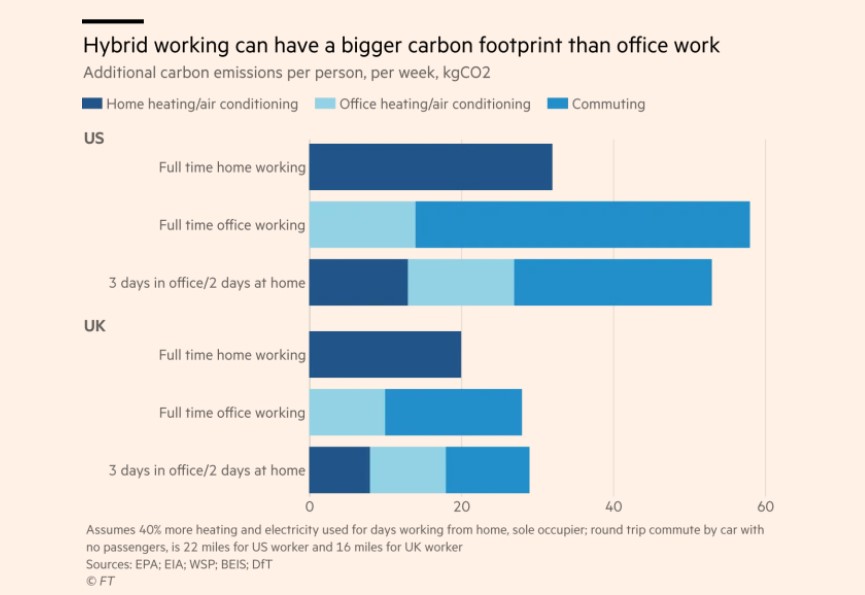Certainly, working from home full-time tends to be much greener than commuting to the office. The energy saved by closing offices and eliminating commuting by personal car more than offsets the extra heat and light needed to work from home, writes Financial Times.
But for hybrid work, the equation is more complicated. A half-empty office needs the same heating and air conditioning as a full one. Giving up the commute two days a week may not be enough to cancel out the extra heating and lighting needed at home. This is the case for a British single worker who - like 69% of his compatriots - commutes to work by car, as this graph shows.

However, it's a fine balance. Increasing the daily distance travelled by just two miles would give a different result. So would a more frugal approach to heating. Emissions - and bills - could easily be halved if extra heat and light were limited to a home office rather than the whole house. Conversely, switching to an electric car or public transport would make office work greener.
In the US, working from home generates greater savings, largely due to less time spent driving gas-guzzling cars. The gains could be greater in winter than in summer. Electricity in the US is relatively carbon-intensive, with fossil fuels accounting for 62% of US electricity generation in 2020, more than half that of the UK.
New opportunities to work from home at least part of the time are encouraging an exodus from city centres. According to a UC Berkeley study, the carbon footprint of households in urban centres is half the US national average, while that of suburban households can be double. This trend increases the risk that hybrid modes will increase emissions.
 Florin Cașotă
Florin Cașotă












Any thoughts?